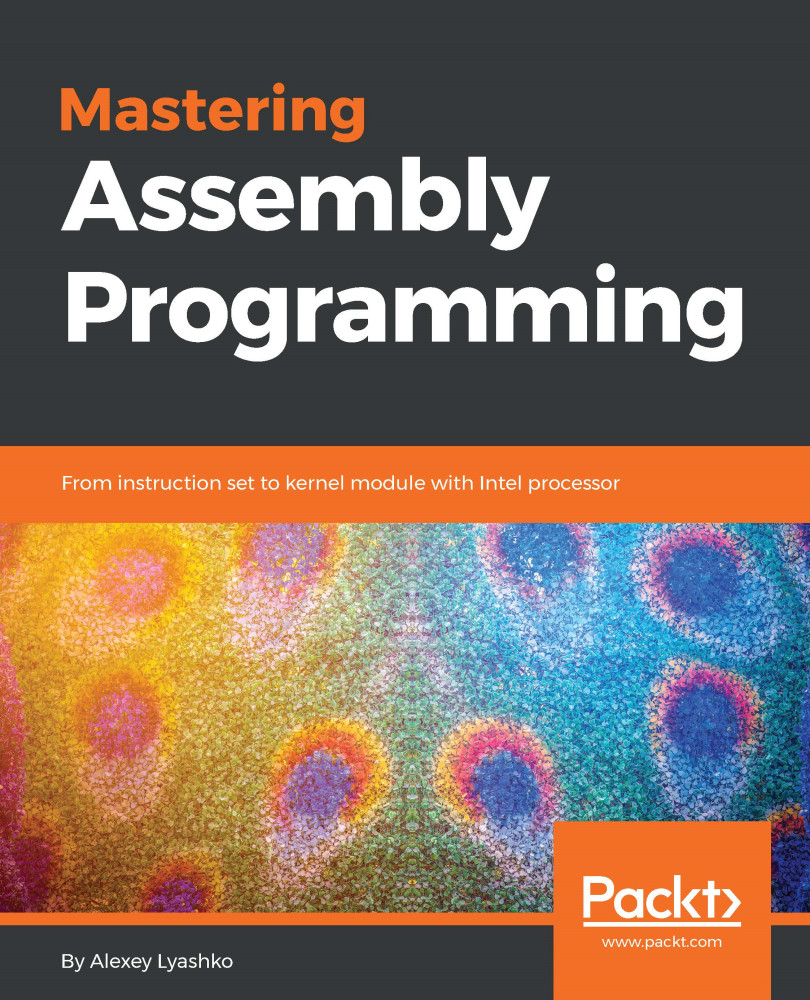When we say "addressing code," we mean the way CPU interprets the address of the next instruction to be executed, and that depends on the logic of the code itself, which tells the processor whether it should execute instructions sequentially or jump to another location.
-
Book Overview & Buying

-
Table Of Contents

Mastering Assembly Programming
By :

Mastering Assembly Programming
By:
Overview of this book
The Assembly language is the lowest level human readable programming language on any platform. Knowing the way things are on the Assembly level will help developers design their code in a much more elegant and efficient way. It may be produced by compiling source code from a high-level programming language (such as C/C++) but can also be written from scratch. Assembly code can be converted to machine code using an assembler.
The first section of the book starts with setting up the development environment on Windows and Linux, mentioning most common toolchains. The reader is led through the basic structure of CPU and memory, and is presented the most important Assembly instructions through examples for both Windows and Linux, 32 and 64 bits. Then the reader would understand how high level languages are translated into Assembly and then compiled into object code. Finally we will cover patching existing code, either legacy code without sources or a running code in same or remote process.
Table of Contents (12 chapters)
Preface
Setting Up a Development Environment
Intel Instruction Set Architecture (ISA)
Memory Addressing Modes
Parallel Data Processing
Macro Instructions
Data Structures
Mixing Modules Written in Assembly and Those Written in High-Level Languages
Operating System Interface
Patching Legacy Code
Oh, Almost Forgot

